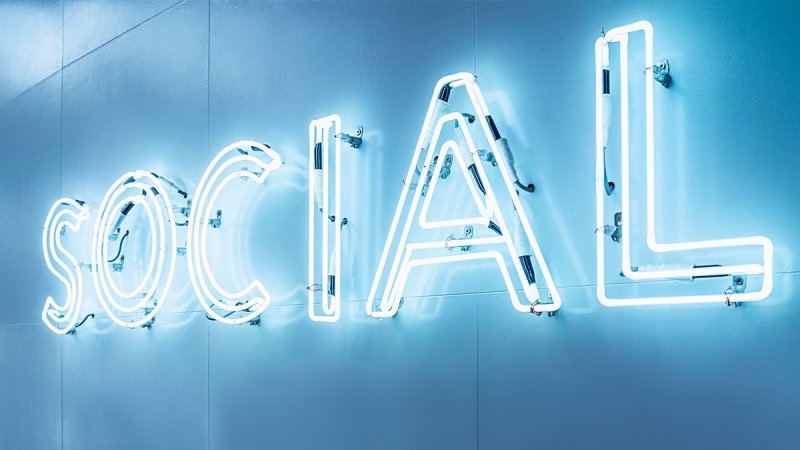Social media is the term given to the collection of online communication channels focused on creating an online social space for people to use. Whether you want to get involved with online political discussions, share holiday snaps, or film yourself pranking friends, social media has something for everyone.
The variety of social media platforms out there means that it has become hugely popular in today’s culture. What started with online forums and blogs, has grown into continuous video and photo sharing. With the average person now spending 2 hours a day on social media – it is clearly a trend that is only going to continue growing.
Types of social media
There are a number of social media sites and apps out there targeting users in various demographics. Here’s a whistle-stop tour of the top five most popular social media apps in use right now:
A free social networking website and app that allows registered users to create profiles where they post about what they’ve been up to with photos and videos, as well as written posts. You can also send messages and keep in touch with friends, family and colleagues. As far as social media goes, Facebook is one of the most varied platforms because of the variety of ways you can share information and communicate with others.
Less focused on personal profiles, and instead serves as a microblogging service where members can broadcast short posts called tweets. Rather than having friends on Twitter (like Facebook), you follow other people to see what they post, and vice versa. Lots of people use Twitter to see what their favourite celebrities’ tweet about rather than close family and friends.
A photo and video sharing app owned by Facebook that has grown in popularity over the past few years due to the obsession people have with mobile photography. Nowadays, smartphones have impressive cameras built in, making it easier for people to instantly share moments online. As well as following family and friends, Instagram is the place to be when keeping up with the exciting lives of the A-listers, similarly to Twitter.
YouTube
The home of video sharing, and the platform responsible for creating social media phenomena like Zoella and PewDiePie, with millions of subscribers between them. People can upload and watch videos on the site, and the professionalism of these videos can range massively, from amateur home videos to high-quality edits and production. The topics covered can range from beauty regimes to pranks and challenges, and with 300 hours’ worth of video being uploaded every minute, whatever you’re interested in – YouTube will have videos on it.
Snapchat
An app on smartphones that means people can send images and videos with a short lifespan. This just means you can send a photo to a friend, and after a few seconds it’s gone forever. As the other sites exist in website format with much more permanent posts, Snapchat is an instant form of social media for people to use.
What is Social Media used for?
The platforms out there vary in terms of what kind of content you can share. This content can range from written posts on Facebook and Twitter, photos on Instagram and Snapchat, to videos on YouTube.
The personal aspect of the platforms varies too. Some sites are used for connecting with people you actually know (like friends and family), but some platforms are used by celebrities, and as a result, scrolling through social media can have the same sort of effect as flicking through a magazine to find out all the latest celeb gossip – another example of how the way we get our information is changing due to technology.
People use social media for both work and pleasure. Just like you can use social media to keep in touch with your loved ones, businesses can use it to build a strong relationship with their customers, as well as a healthy workforce through creating an employee/employer online community.
As traditional forms of marketing and promotion have become less effective, businesses can use social media in order to increase their exposure to potential customers. For example, brands using influential people such as reality stars and celebrities to endorse their products with sponsored social media posts. People can be highly influenced by what their favourite celebrities use, so brands use this for promotion.
As well as businesses using the traditional forms of social media to increase their exposure and maintain good customer relations, there are social media platforms out there for businesses to use. LinkedIn is the most established example of this. Set up in 2003, the site is used for professional networking where employers can post job roles and job seekers can post their CVs – a social network for the working world.
Dangers of social media
Cybersecurity
Hackers don’t even need to look very far when it comes to gaining information on users through social media. They start by gathering their victims’ personal information from what’s available on the sites. Many identity thieves can get into their victim’s email by following the “forgot password,” option and then trying to recover the password via email. Once they are into your email account, they have opened a whole new wealth of valuable data.
Hacking across social media has become so common that it has acquired its own name – social engineering. Rather than requiring a high level of technical skill, it is more often about using the information available on a personal profile to win the trust of a complete stranger through psychological games in order to exploit them for personal gain.
Trolling
The protection of a screen means that some people use social media as a way of abusing others or exploiting them for financial gain. This is when the privacy settings come into their own so you can control who can see you, increasing your online security.
Trolling is basically online bullying. Public figures are often the victims of online trolling due to their high profiles leaving them in the firing line. In 2012, Tom Daley narrowly missed out on a medal during the London Olympics and faced a massive wave of abuse on Twitter as a result. Sadly this is just one of many cases of celebrities being the targets of vicious trolling.
Mental health
Our obsession with scrolling has become a serious problem. The average Brit checks their phone as much as 28 times a day, leading to a habit that can become damaging on our mental health because of the constant comparisons we make between ourselves and other people. While social media platforms can have their benefits, using them too much can make you feel increasingly unhappy and isolated in the long run.
The constant barrage of perfectly filtered photos that appear on Instagram is bound to knock many people’s self-esteem, while obsessively checking your Twitter feed just before bed could be contributing towards poor quality of sleep. Becoming more conscious of the amount of time you spend scrolling through other people’s online profiles could help you focus back on yourself, boosting your self-confidence as a result.
Despite these dangers and problems with social media, the positive impact it has cannot be ignored. And if used correctly, you can maintain friendships, share your feelings and memories, and create an online life to look back on in the future.

How to stay safe on social media
Here are 10 ways to keep yourself safe whilst using social media networks:
- Use a strong password. The longer and more random it is, the more secure it will be.
- Use a different password for each of your social media accounts.
- Set up your security answers. This option is available for most social media sites.
- If you have social media apps on your phone, be sure to password protect your device and always update the apps when prompted, up-to-date apps are the safest.
- Be selective with friend requests. If you don’t know the person, don’t accept their request. It could be a fake account containing harmful data.
- Click links with caution. Social media accounts are regularly hacked. Look out for language or content that does not sound like something your friend would post, harmful files can be sent via links, and sometimes all you need to do is open the link for the virus to be released onto your device.
- Be careful about what you share. The more you post the easier it is to have your identity stolen.
- Become familiar with the privacy policies of the social media channels you use and customise your privacy settings to control who sees what. If your information falls into the wrong hands you could become a victim of identity fraud.
- Protect your computer by installing antivirus software to safeguard. Also ensure that your browser, operating system, and software are kept up to date, just like your apps.
- Remember to log off when you’re done.
Social media for businesses
The popularity of social media isn’t restricted to our social lives anymore, businesses are jumping on the craze too. Social media is used in business in a number of ways:
Customer relations
Just like you can use social media to keep in touch with your loved ones, businesses can use it to build strong links with their customers, both locally and globally, as well as creating a healthy workforce through employee/employer relations.
Marketing
As traditional forms of marketing and promotion have become less effective, businesses can use social media in order to increase their exposure to potential customers, and therefore increase their audience. For example, brands using influential people such as reality stars and celebrities to endorse their products with sponsored social media posts. People can be highly influenced by what their favourite celebrities use, so brands use this technique for promotion.
Business-focused platforms
As well as businesses using the traditional forms of social media to increase their exposure and maintain good customer relations, there are social media platforms out there specifically for businesses. LinkedIn is the most established example of this. Set up in 2003, the site is used for professional networking where employers can post job roles and job seekers can share their CVs – a social network for the professional side of life.
Reviews
Social media can influence consumer’s purchase decisions through reviews, marketing tactics and advertising. It allows the customer to have the power to share their experience of a company – something that has the potential to advertise the organisation in the best possible way, through the voices of the customers.
Networking
As well as businesses using the traditional forms of social media to increase their exposure and maintain good customer relations, there are social media platforms out there specifically for business use. LinkedIn is the most established example of this. Set up in 2003, the site is used for professional networking where employers can post job roles and job seekers can post their CVs – a social network for the professional side of life!
Social media has changed the ways we are connecting, communicating, and collaborating, and this is influential over our social and professional lives. The skill is knowing which platforms are best for you, depending on what you want to use it for, and what you want to get out of it.
The importance of staying safe on social media is greater than ever, and is much more than just a case of turning on your privacy settings. The dangers can come in a number of forms and could lead to financial harm just as much as mental health problems – both risks that are equally serious for individuals and businesses alike.
Check out our Social Media Awareness training course to learn more about how to protect your organisation’s reputation online.

